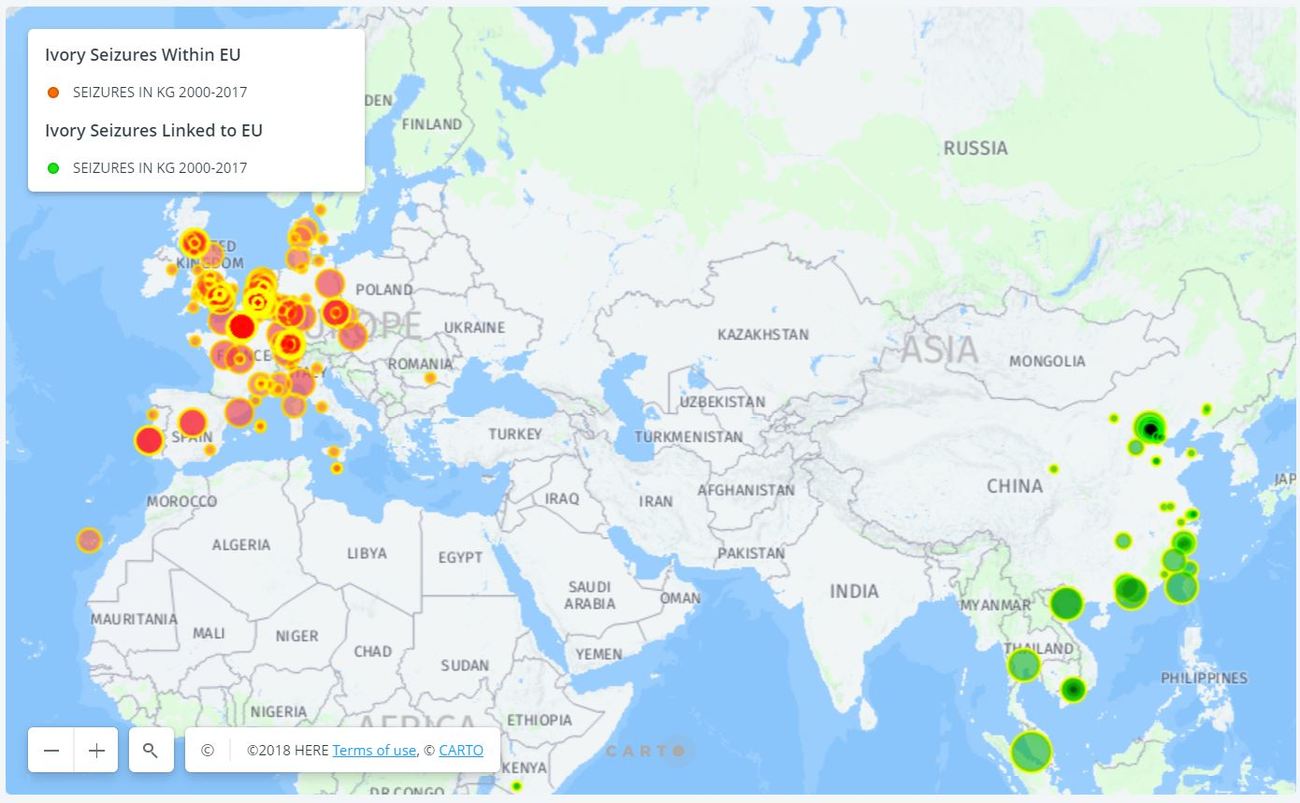Wildlife Crime Prevention - Europe
The European Union is widely considered to be the third largest destination for illegal wildlifemap highlights Europe's role in the global ivory trade
map highlights Europe's role in the global ivory trade

In July of this year, IFAW launched a campaign aimed at closing all European domestic ivory markets. The campaign follows a guidance document released by the European Commission to ban the re-export of raw ivory products from the Union. The discussions are now focused on whether the EU should go further and ban all ivory products, including worked items which comprehend many different types of objects (antiques and various other kinds of carvings).
IFAW is not alone in its request, according to a survey conducted by YouGov for IFAW. Ninety percent of Europeans are not interested in buying ivory products, and big online vendors, like E-Bay, are also backing an EU ban.
Other environmental NGOs are sharing their expertise and working hard to see this happen as well. For example, the Environmental Investigation Agency (EIA) has collected data on European ivory seizures from enforcement agencies, government releases, NGOs and media reports and has produced an impressive interactive map identifying ivory seizures from 2000 to 2017 in 14 European Member States.
EIA compared the data from seizures of illegal products with the amount of legal re-exports of ivory throughout 2003 to 2014. Results are quite shocking: 11 tonnes of illegal ivory seized vs 4 tonnes of ivory legally re-exported. This seems to be only the tip of the iceberg, as experts estimate that seized items represent only 10 percent of the total amount of illegally traded items.
The analysis shows that Europe plays a significant role in the global ivory trade and that there is a significant lack of consistent seizure data, database management and legal enforcement in most EU Member States. Several takeaways from this research include:
- It appears that Brussels Airport leads in the frequency of seizures at the Brussels Airport, but those seizures are small in size.
- More sizable are the seizures transiting through the UK and France.
- The UK alone has totaled 17 percent of the whole seizure volume schemed in the map.
- Since 2000, almost 500 kg of seizures outside Europe appear to be linked to European markets - China officials alone has seized ivory coming from Belgium, France, the UK, Italy, Portugal, Germany and The Netherlands.
The main conclusions drawn from this research are that there is the need for more robust methodology in detecting ivory consignments, greater cooperation among transportation sector and hubs (airports, ports, etc.) and stricter rules in place.
Given that the majority of seizures consisted of worked ivory, EIA states that it is crucial the EU goes beyond an export ban of raw ivory and also prohibits exports of worked ivory. We couldn’t agree more.
For more information about EIA investigation, please visit EIA-International.org.
Eleonora Panella
Related content
Every problem has a solution, every solution needs support.
The problems we face are urgent, complicated, and resistant to change. Real solutions demand creativity, hard work, and involvement from people like you.